1288
Hunters for honey in the Himalayas
LJ user dementievskiy writes in his blog: Today we are going
Nepal, in the area of the Annapurna massif in the Main Himalayan ridge where
Each spring the locals skillfully extracted honey bees Wild Himalayan.

The final point of our trip - this village. In the photo the main square, which probably 200-250 square meters. Of course the whole village in the area. Evenings, weekends, they do not talk. And here we come yet!
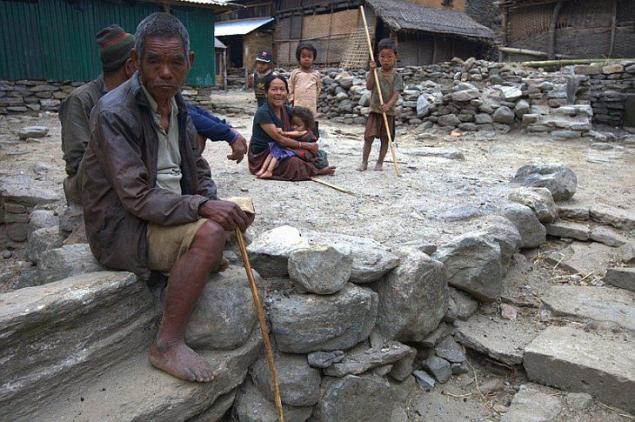
At night, by candlelight, we cook dinner. And it was full of romance around.
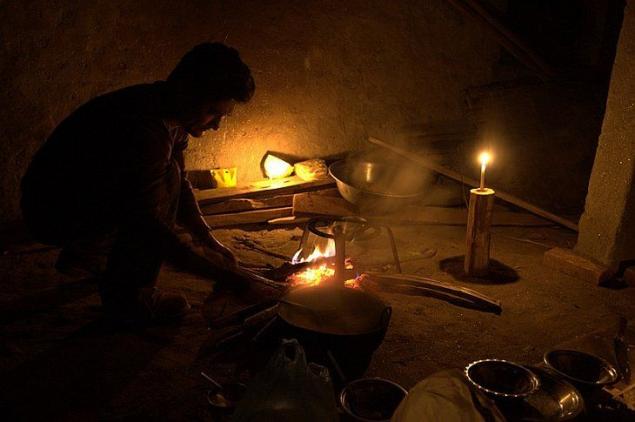
And in the morning the whole village out into the street. Start gathering in the mountains.
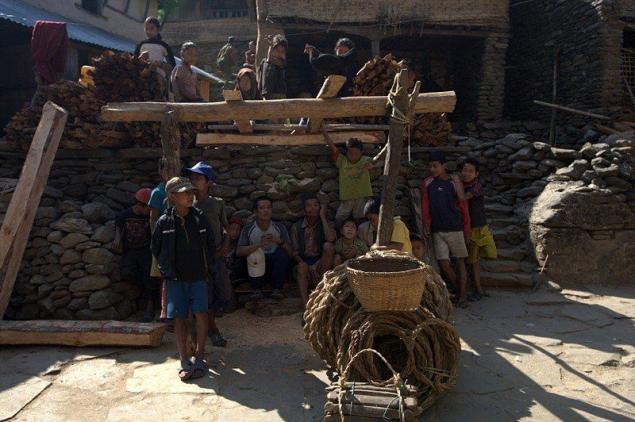
Are almost all men. Even the military, somehow caught in this morning in the village. But the production - it is the prerogative of the elderly.
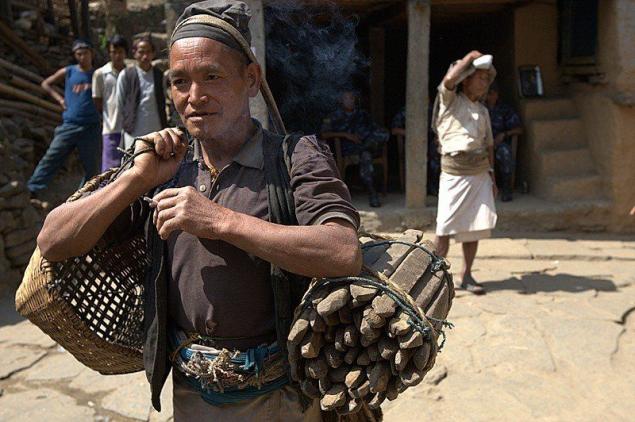
We are advancing with the first group, which carries everything you need for running over rocks, namely braided cords and ropes, and carved wood staircase. Before coming all participants, ropes zamochat in water and will be turned into a ladder.
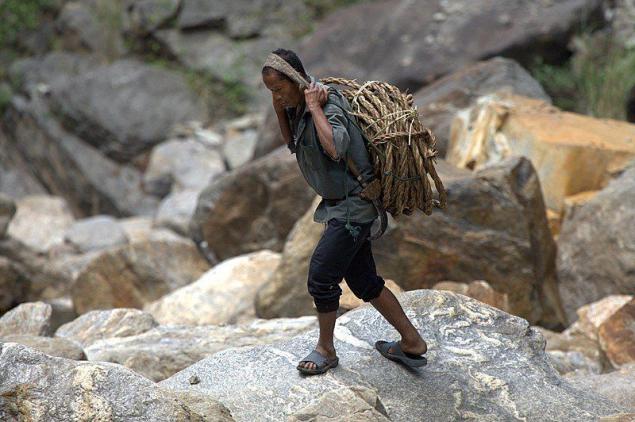
Frankly, it was to look at a few scary. Nowadays, high technology, have different equipment for climbing. And everything is handmade. Soaked rope not more than an hour.
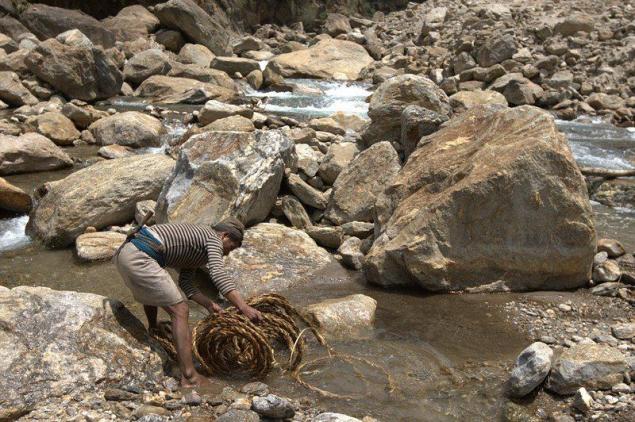
We also do not waste time in vain. We looked around and began to reason like that and where we will withdraw. We were given white caps with the mesh of the bees. We somehow sluggishly react to this, but when the guide was bitten by a bee on the forehead, we quickly equip. It was found that bees react more on the dark, and then I had not sweet - I was wearing a dark jacket. As a result, I got a bee in his finger. The camera, by the way, too black.
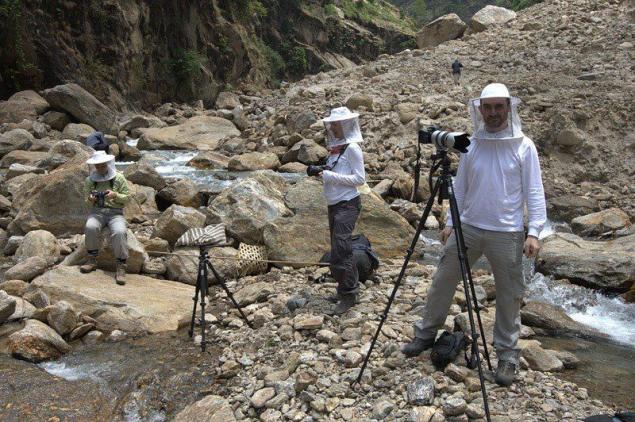
The wet rope Nepalese inserted wooden sticks - the future steps of the stairs. Then they tightly linked. Than? Improvised rope which immediately themselves and made from plants.
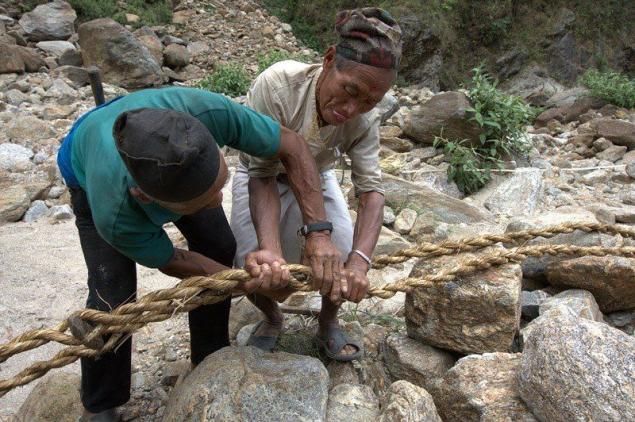
Making the most of these verёvochek.
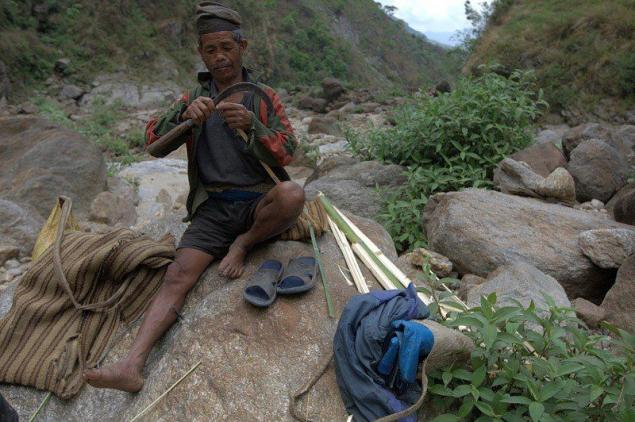
When the ladder is ready, it is carried to a place hives. They have already begun to kindle fires, the smoke from which drives away the bees.
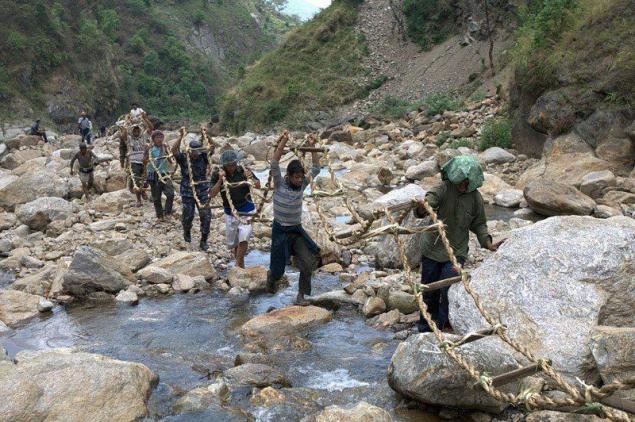
On top, above the place where there are hives, tied a rope and throw down. They tied to it a ladder, and thus it is stretched at the right place.
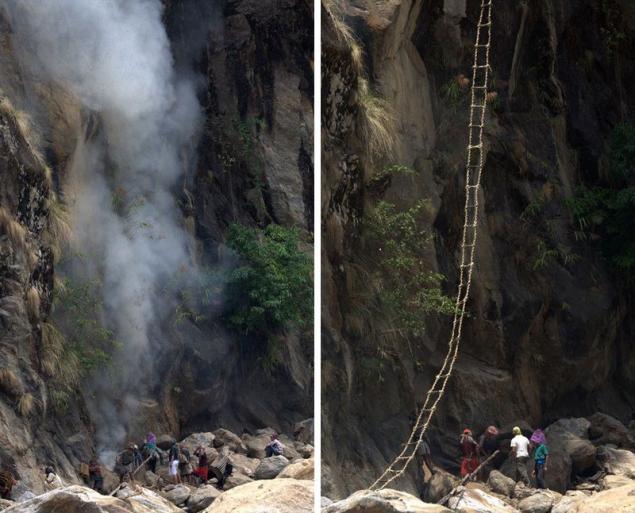
Once started smokes about 15 minutes of furious bees flying around and someone got. But then they become weaker and we can more or less safe to work and approach. Nepalese one, two or even more bee stings are not afraid, they have probably already developed immunity. We are also a bee sting will take a lot of troubles. If you look closely, you can at the top on a white background to see a lot of small black spots ... It's not dirt on the camera matrix.
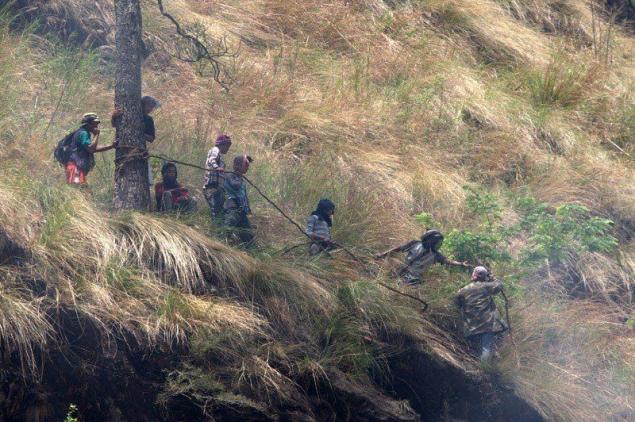
Then the bottom is fed via ropes staves with which work two persons. And also on top of the cart down the ropes will

We started working from afar, bolder came closer. I got a dose of bee venom, was the most cautious.

Children mostly work together. First they tore off already dry cell, and then held a basket of the second to sixth cells scraped from the stone.
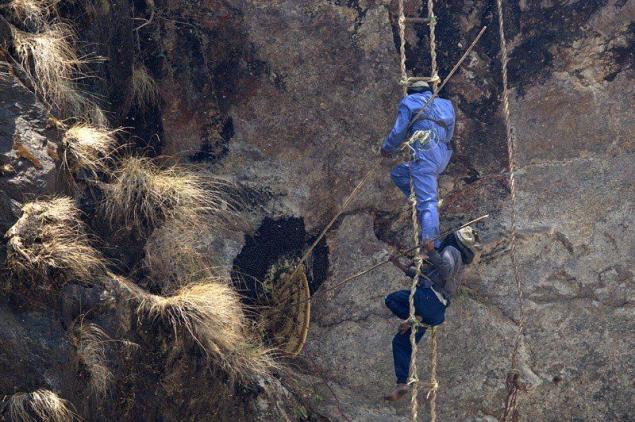
Cells without honey they will not throw, but also take away with them.

This is how they collect honey. How bitten guys, I can not even imagine. But when I saw them up close, swollen faces were very specific.

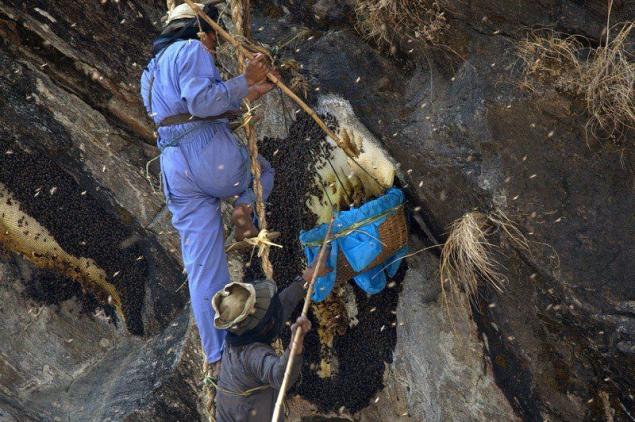
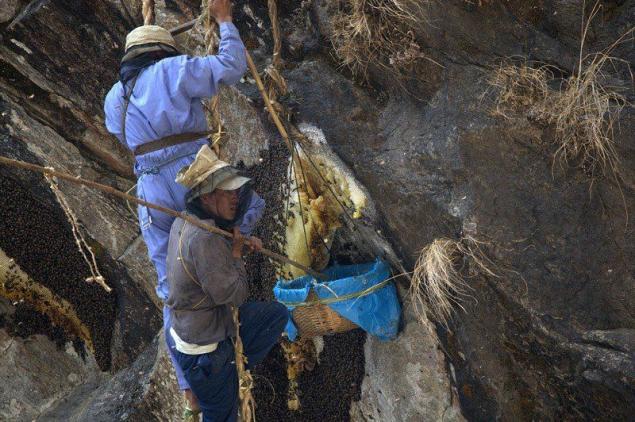
This Nepalese - a real virtuoso. When a teammate has left, he had to work alone. By the way, they tied themselves to a ladder with ropes. I thought it is only we have not seen, and for us it is a wonder. But no, it was the gathering place for many local, and they are curiously looking at it all.
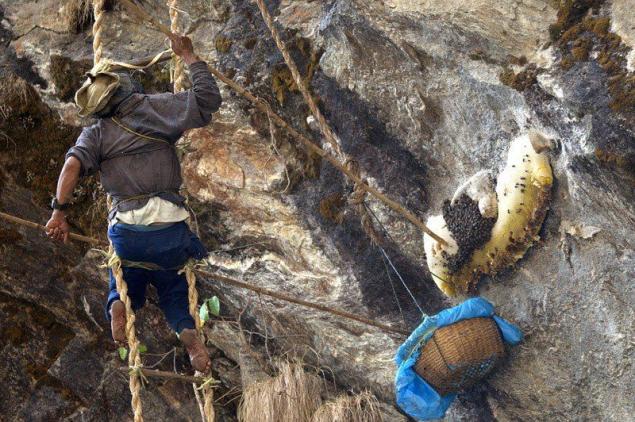

This basket full of honey production, which disperse in all homes. And by the way, we also perepalo bit.
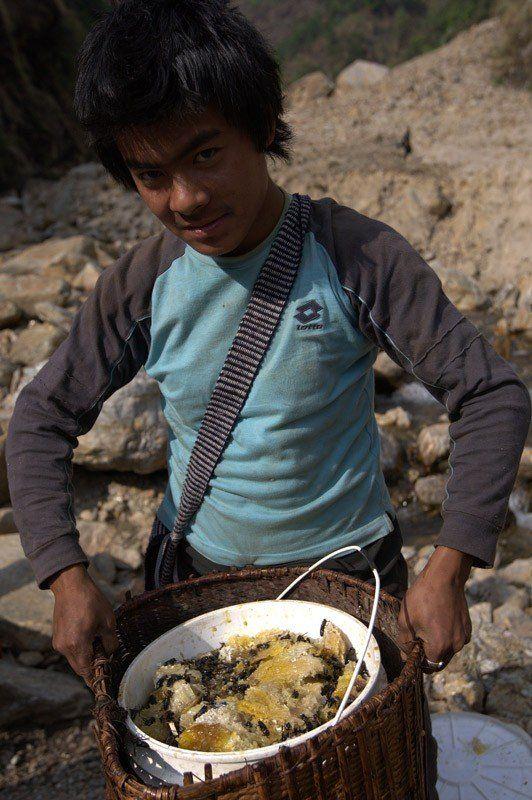
The boys carried the empty cell. Do not empty. I came to a halt a closer look, and it was full of maggots, and some bees have got out of the cells. I do not know whether they bite once, but I think they have an instinct in this plan works immediately.

And in the evening, when it got dark, the whole village was walking in the square, there were dances and songs.
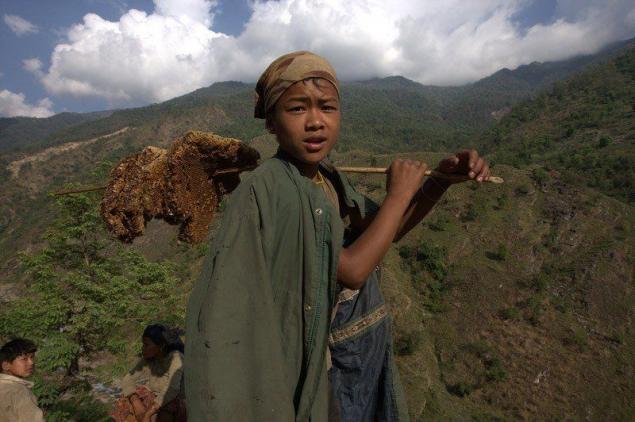
via source
Nepal, in the area of the Annapurna massif in the Main Himalayan ridge where
Each spring the locals skillfully extracted honey bees Wild Himalayan.

The final point of our trip - this village. In the photo the main square, which probably 200-250 square meters. Of course the whole village in the area. Evenings, weekends, they do not talk. And here we come yet!

At night, by candlelight, we cook dinner. And it was full of romance around.

And in the morning the whole village out into the street. Start gathering in the mountains.

Are almost all men. Even the military, somehow caught in this morning in the village. But the production - it is the prerogative of the elderly.

We are advancing with the first group, which carries everything you need for running over rocks, namely braided cords and ropes, and carved wood staircase. Before coming all participants, ropes zamochat in water and will be turned into a ladder.

Frankly, it was to look at a few scary. Nowadays, high technology, have different equipment for climbing. And everything is handmade. Soaked rope not more than an hour.

We also do not waste time in vain. We looked around and began to reason like that and where we will withdraw. We were given white caps with the mesh of the bees. We somehow sluggishly react to this, but when the guide was bitten by a bee on the forehead, we quickly equip. It was found that bees react more on the dark, and then I had not sweet - I was wearing a dark jacket. As a result, I got a bee in his finger. The camera, by the way, too black.

The wet rope Nepalese inserted wooden sticks - the future steps of the stairs. Then they tightly linked. Than? Improvised rope which immediately themselves and made from plants.

Making the most of these verёvochek.

When the ladder is ready, it is carried to a place hives. They have already begun to kindle fires, the smoke from which drives away the bees.

On top, above the place where there are hives, tied a rope and throw down. They tied to it a ladder, and thus it is stretched at the right place.

Once started smokes about 15 minutes of furious bees flying around and someone got. But then they become weaker and we can more or less safe to work and approach. Nepalese one, two or even more bee stings are not afraid, they have probably already developed immunity. We are also a bee sting will take a lot of troubles. If you look closely, you can at the top on a white background to see a lot of small black spots ... It's not dirt on the camera matrix.

Then the bottom is fed via ropes staves with which work two persons. And also on top of the cart down the ropes will

We started working from afar, bolder came closer. I got a dose of bee venom, was the most cautious.

Children mostly work together. First they tore off already dry cell, and then held a basket of the second to sixth cells scraped from the stone.

Cells without honey they will not throw, but also take away with them.

This is how they collect honey. How bitten guys, I can not even imagine. But when I saw them up close, swollen faces were very specific.



This Nepalese - a real virtuoso. When a teammate has left, he had to work alone. By the way, they tied themselves to a ladder with ropes. I thought it is only we have not seen, and for us it is a wonder. But no, it was the gathering place for many local, and they are curiously looking at it all.


This basket full of honey production, which disperse in all homes. And by the way, we also perepalo bit.

The boys carried the empty cell. Do not empty. I came to a halt a closer look, and it was full of maggots, and some bees have got out of the cells. I do not know whether they bite once, but I think they have an instinct in this plan works immediately.

And in the evening, when it got dark, the whole village was walking in the square, there were dances and songs.

via source
Musical instruments, which is easy to learn to play
Marilyn Monroe in a bikini at the pool: unknown pictures
























